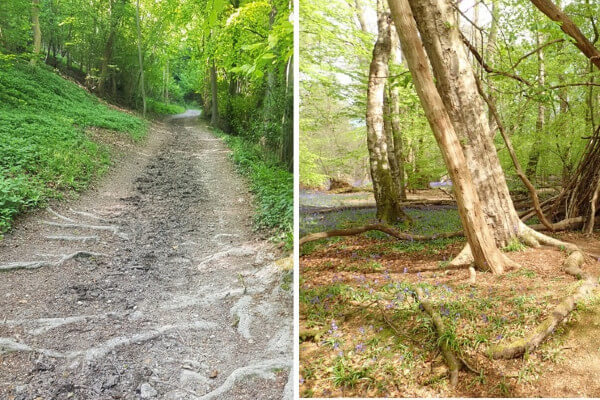Mitigation Strategy Agreed to Protect Ashridge Commons and Woods

Dacorum Borough Council has published a Mitigation Strategy to help protect Ashridge Commons and Woods.
This follows a report in March this year by ecology consultants, Footprint Ecology which provided scientific evidence that harm was occurring to the special features of the Chilterns Beechwoods SAC (Special Area of Conservation) at Ashridge Commons and Woods SSSI (Sites of Special Scientific Interest).
Since the publication of the ecology report and revised guidance from Natural England, the Council has been unable to issue planning permission for applications for residential development until a Mitigation Strategy is in place.
The Council has been working closely with neighbouring authorities (Central Bedfordshire Council, St Albans City and District Council and Buckinghamshire Council), Natural England and the National Trust to develop the strategy.
The new Mitigation Strategy sets out targeted measures to protect the site and to accommodate the predicted pressures associated with future growth within the 12.6 kilometre Zone of Influence that extends from Ashridge Commons and Woods. These measures will be delivered through a range of projects by the National Trust over a period of around 80 years (to 2102/2103).
The National Trust has confirmed that these Strategic Access Management and Monitoring (SAMMS) measures will cost a total of £18,275,510. This cost will be apportioned across all of the affected local authorities. In Dacorum, this means that developers will be required to pay a tariff of £913.88 per dwelling for each new home built.
To help to reduce recreational pressures on Ashridge Commons and Woods, alternative green spaces need to be identified. All new developments within the Zone of Influence will need to make provision for a new Suitable Alternative Natural Greenspace (SANG), or alternatively contribute towards the maintenance of a suitable SANG project elsewhere.
Larger developments (10 or more new homes) must be located close to a suitable SANG. Smaller developments can contribute towards an existing SANG. The Council has so far identified Bunkers Park and Chipperfield Common as SANGs. Developers that are unable to provide a suitable new SANG will be required to make a payment to the Council towards the long-term management and maintenance of these sites, which equates to £4,251.00 per new home.
All new homes granted planning permission from 14 March 2022, where there is a net increase through development, will need to contribute towards the SAMM projects and either directly deliver a new SANG or contribute towards the delivery of a Council-led ‘Strategic’ SANG. In the case of SAMM, the Council will pass on these contributions to the National Trust.
Currently there is no SANG in place for larger developments outside the catchment area of Hemel Hempstead. This means that developments will not be able to proceed, unless they can bring forward their own SANG solution. However the Council is currently working to try and resolve this issue.
Cllr Alan Anderson, Portfolio Holder for Place said: ‘It is very important that we have a Mitigation Strategy in place to protect the future of these unique sites for future generations. Through our partnership working with our neighbouring authorities, the National Trust and Natural England, we have developed a robust, long-term strategy to manage future growth and ensure that access to green spaces is maintained for our residents. The strategy also paves the way for current restrictions on the majority of residential applications to be lifted.’
Further details, including information for developers is available on the Council’s website: www.dacorum.gov.uk/SAC
